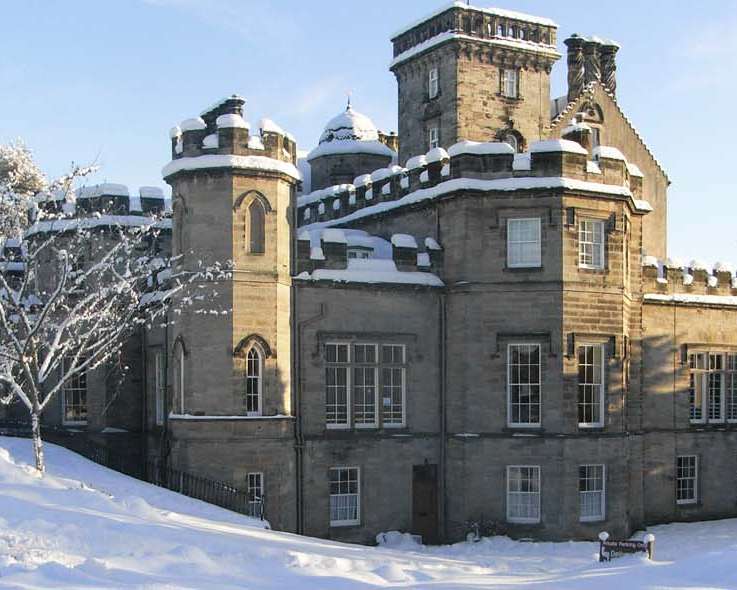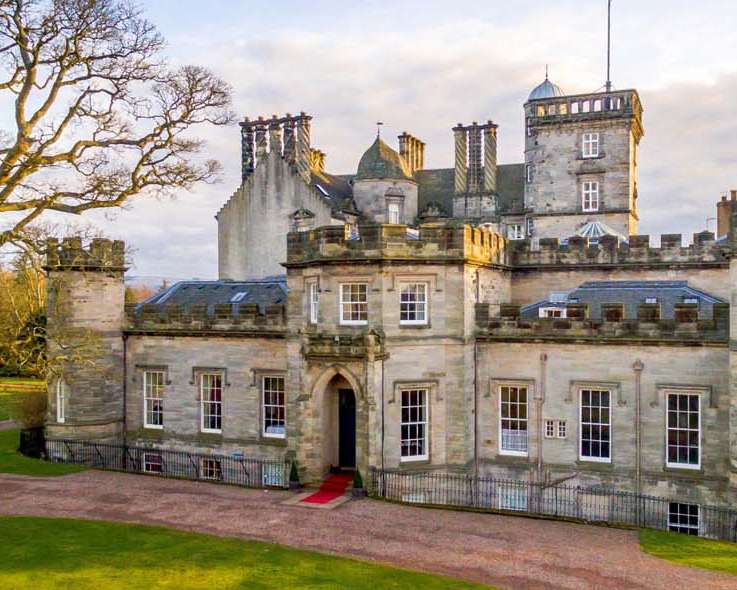
Winton House’s remarkable, rich history stretches back over 800 years. Winton Castle, near Edinburgh, was originally built by the powerful Seton family and has strong connections to Scottish and English royalty, not to mention the Elgin Marbles. After the Setons the castle passed to the well connected Hamilton Nisbets and it has been lived in by the Ogilvy family since the 1920’s.
Over the last 10 years Winton House has become a successful exclusive use venue, a ‘castle for hire’, for hosted bespoke events for blue chip companies from the UK and Europe, as well as for private parties. The events team runs corporate dinners and lunches, conferences and meetings, product launches, private parties, romantic weddings, and even offers top notch bed and breakfasts. Activities and team-building events such as clay pigeon shooting (with 22 times Scottish champion Billy Gordon), highland games with a Winton twist, and falconry all take place in the grounds.
Norman the Conqueror and the Setons
Robert FitzPicot ‘de Say’ fought with Norman the Conqueror at the Battle of Hastings in 1066. Robert’s descendant Phillip ‘de Sayton’ was granted the lands of Winton, Seton and Winchburgh by David 1 of Scotland in 1150. His grandson went on to marry the sister of King Robert ‘The Bruce’ of Scotland, and then began almost six centuries of Setons at Winton.
The Seton family was heavily involved in the Wars of Independence in the 14th century including the Siege of Berwick and the Battle of Bannockburn. They held important positions of state: Mary Seton was Lady-in-Waiting to Mary Queen of Scots; Robert, the 4th Lord Seton, was the Lord of Session; and Alexander, (the brother of the 1st Earl) became Earl of Dunfermline and Chancellor of Scotland.
Burnt to the ground
A tower was built at Winton in about 1480 when the Seton’s main seat was nearby at Seton Palace by Longniddry. In the sixteenth century, the Setons were caught up in the aggression of the Earl of Hertford, and under Henry VIII’s orders, Winton was burnt by the English Army in 1544 around the time of the siege of Haddington. Apparently Henry VIII was trying to woo and impress the beautiful Mary Queen of Scots for his son Edward. The thick walls of the vaulted basement survived the fire and live on today, now known as the Vaulted Cellar. This atmospheric room is used for whisky tastings, Champagne and wine tastings, breakfasts and intimate lunches.
A Scottish Renaissance gem
When the 6th Lord Seton was made 1st Earl of Winton in 1600, he set about making a home out of the ruin. The work was continued by his nephew, the 3rd Earl, who engaged the services of William Wallace, the King’s Master Mason. Wallace was responsible for many prestigious projects at the time and the ruined tower was transformed into one of the finest examples of Scottish Renaissance architecture with its intricate ceilings and remarkable carved, twisted chimneys.
The Tower of London
The Seton’s tenure lasted until 1715 when the Earl of Winton ended up in the Tower of London for backing the Jacobites. The Earl’s capture meant that kings were no longer entertained at Winton.
In the Earl’s name, in 1745 Winton was requisitioned by Bonnie Prince Charlie when his rebel army camped on Winton Estate.
The Hamilton Nisbets
The Hamilton Nisbets, who bought the House and Estate, linked it to the impressive estates of Archerfield, Biel and Innerwick. Furnishings were brought back from Europe and the Turkish Empire, and golf was played the estate land, which included Muirfield and Gullane Links. Winton House, like the other grand houses on their estates, was built for entertaining, and played host to some extravagant Victorian parties.
The Ogilvys
The Ogilvys from Angus were linked to Winton by marriage in 1888. The families’ paths had crossed on battlefields for seven centuries (usually on the same side) and in parliament. Following the death of Constance Nisbet Hamilton Ogilvy in 1920, Winton developed as a single estate again, still with its treasures intact.
Winton House remains first and foremost a family home, now with the sound of Sir Francis and Lady Ogilvy’s four young children. The House retains is beauty, tranquility, grandeur and warmth, as captured in its strapline ‘intimacy on a grand scale’. Private and corporate parties are welcomed as genuinely as royalty were in the past.
Related Posts
December 15, 2021
Merry Christmas from Team Winton!
February 6, 2017

